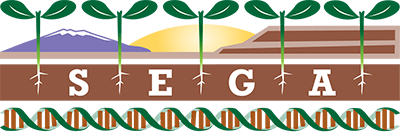You are here
Cheatgrass invasion alters the abundance and composition of dark septate fungal communities in sagebrush steppe.
Publication Type:
Journal ArticleSource:
Botany, Volume 9, Issue 6, p.481 - 491 (2016)Abstract:
Invasive, non-native plant species can alter soil microbial communitiesin ways that contribute to their persistence. While most studies
emphasize mycorrhizal fungi, invasive plants also may influence
communities of dark septate fungi (DSF), which are common root
endophytes that can function like mycorrhizas. We tested the hypothesis
that a widespread invasive plant in the western United States,
cheatgrass (<i>Bromus tectorum</i> L.), influenced the abundance and
community composition of DSF by examining the roots and rhizosphere
soils of cheatgrass and two native plant species in cheatgrass-invaded
and noninvaded areas of sagebrush steppe. We focused on cheatgrass
because it is negatively affected by mycorrhizal fungi and colonized by
DSF. We found that DSF root colonization and operational taxonomic unit
(OTU) richness were significantly higher in sagebrush (<i>Artemisia tridentata</i> Nutt.) and rice grass (<i>Achnatherum hymenoides</i>
(Roem. & Schult.) Barkworth) from invaded areas than noninvaded
areas. Cheatgrass roots had similar levels of DSF colonization and OTU
richness as native plants. The community composition of DSF varied with
invasion in the roots and soils of native species and among the roots of
the three plant species in the invaded areas. The substantial changes
in DSF we observed following cheatgrass invasion argue for comparative
studies of DSF function in native and non-native plant species.
Notes:
[Original String]:Gehring, C. A., Hayer, M. Flores-Renteria, L. Krohn, A. L., Schwartz, E. and Dijkstra, P. (In press). Cheatgrass invasion alters the abundance and composition of dark septate fungal communities in sagebrush steppe. Botany.
- Log in to post comments
- Google Scholar
- RTF
- EndNote XML
- RIS
Theme by Danetsoft and Danang Probo Sayekti inspired by Maksimer
